Justice Sefas
Free Energy Risk Metrics for Systemically Safe AI: Gatekeeping Multi-Agent Study
Feb 06, 2025Abstract:We investigate the Free Energy Principle as a foundation for measuring risk in agentic and multi-agent systems. From these principles we introduce a Cumulative Risk Exposure metric that is flexible to differing contexts and needs. We contrast this to other popular theories for safe AI that hinge on massive amounts of data or describing arbitrarily complex world models. In our framework, stakeholders need only specify their preferences over system outcomes, providing straightforward and transparent decision rules for risk governance and mitigation. This framework naturally accounts for uncertainty in both world model and preference model, allowing for decision-making that is epistemically and axiologically humble, parsimonious, and future-proof. We demonstrate this novel approach in a simplified autonomous vehicle environment with multi-agent vehicles whose driving policies are mediated by gatekeepers that evaluate, in an online fashion, the risk to the collective safety in their neighborhood, and intervene through each vehicle's policy when appropriate. We show that the introduction of gatekeepers in an AV fleet, even at low penetration, can generate significant positive externalities in terms of increased system safety.
A Diffusion-Model of Joint Interactive Navigation
Sep 21, 2023



Abstract:Simulation of autonomous vehicle systems requires that simulated traffic participants exhibit diverse and realistic behaviors. The use of prerecorded real-world traffic scenarios in simulation ensures realism but the rarity of safety critical events makes large scale collection of driving scenarios expensive. In this paper, we present DJINN - a diffusion based method of generating traffic scenarios. Our approach jointly diffuses the trajectories of all agents, conditioned on a flexible set of state observations from the past, present, or future. On popular trajectory forecasting datasets, we report state of the art performance on joint trajectory metrics. In addition, we demonstrate how DJINN flexibly enables direct test-time sampling from a variety of valuable conditional distributions including goal-based sampling, behavior-class sampling, and scenario editing.
Realistically distributing object placements in synthetic training data improves the performance of vision-based object detection models
May 24, 2023Abstract:When training object detection models on synthetic data, it is important to make the distribution of synthetic data as close as possible to the distribution of real data. We investigate specifically the impact of object placement distribution, keeping all other aspects of synthetic data fixed. Our experiment, training a 3D vehicle detection model in CARLA and testing on KITTI, demonstrates a substantial improvement resulting from improving the object placement distribution.
Video Killed the HD-Map: Predicting Driving Behavior Directly From Drone Images
May 19, 2023Abstract:The development of algorithms that learn behavioral driving models using human demonstrations has led to increasingly realistic simulations. In general, such models learn to jointly predict trajectories for all controlled agents by exploiting road context information such as drivable lanes obtained from manually annotated high-definition (HD) maps. Recent studies show that these models can greatly benefit from increasing the amount of human data available for training. However, the manual annotation of HD maps which is necessary for every new location puts a bottleneck on efficiently scaling up human traffic datasets. We propose a drone birdview image-based map (DBM) representation that requires minimal annotation and provides rich road context information. We evaluate multi-agent trajectory prediction using the DBM by incorporating it into a differentiable driving simulator as an image-texture-based differentiable rendering module. Our results demonstrate competitive multi-agent trajectory prediction performance when using our DBM representation as compared to models trained with rasterized HD maps.
Conditional Permutation Invariant Flows
Jun 17, 2022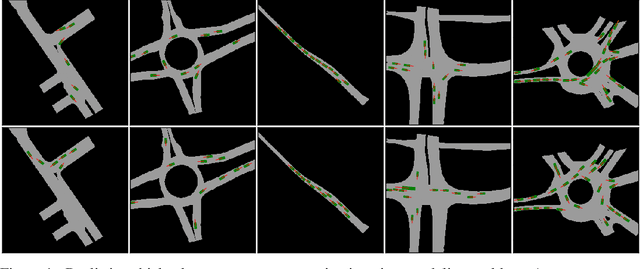
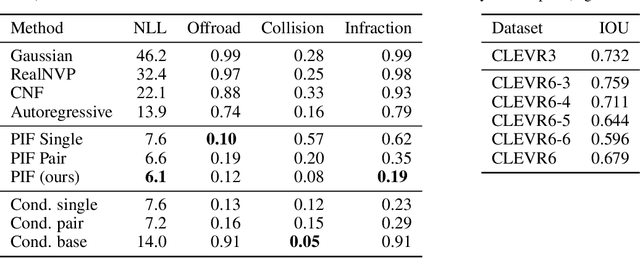


Abstract:We present a novel, conditional generative probabilistic model of set-valued data with a tractable log density. This model is a continuous normalizing flow governed by permutation equivariant dynamics. These dynamics are driven by a learnable per-set-element term and pairwise interactions, both parametrized by deep neural networks. We illustrate the utility of this model via applications including (1) complex traffic scene generation conditioned on visually specified map information, and (2) object bounding box generation conditioned directly on images. We train our model by maximizing the expected likelihood of labeled conditional data under our flow, with the aid of a penalty that ensures the dynamics are smooth and hence efficiently solvable. Our method significantly outperforms non-permutation invariant baselines in terms of log likelihood and domain-specific metrics (offroad, collision, and combined infractions), yielding realistic samples that are difficult to distinguish from real data.
Critic Sequential Monte Carlo
May 30, 2022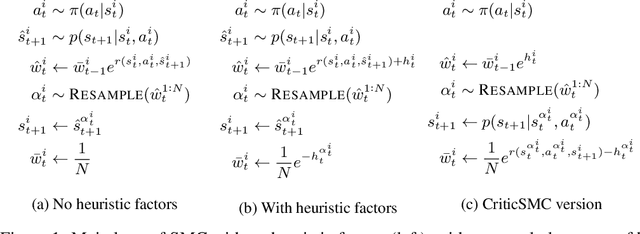
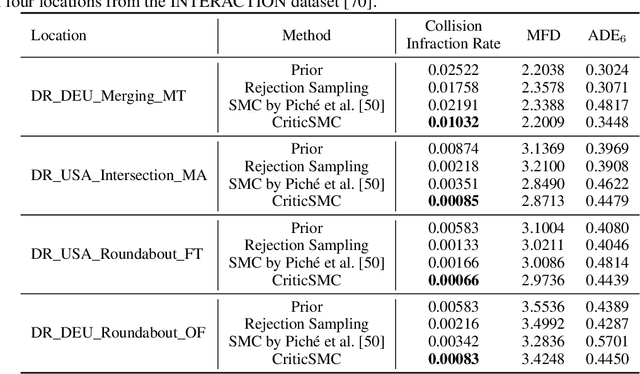
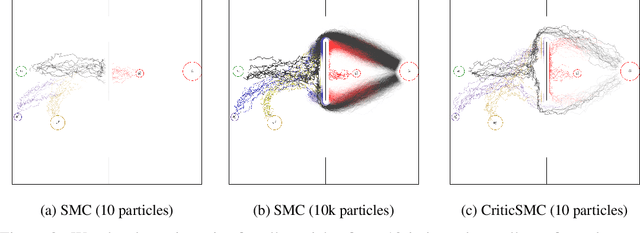
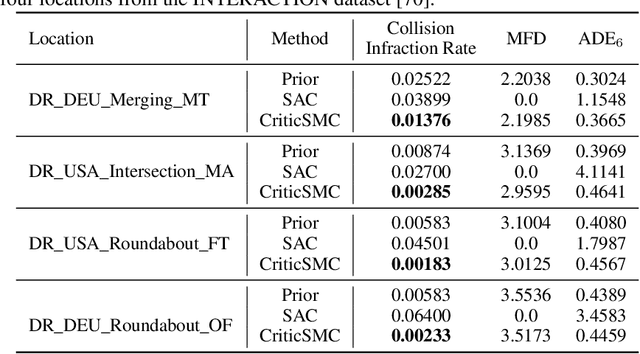
Abstract:We introduce CriticSMC, a new algorithm for planning as inference built from a novel composition of sequential Monte Carlo with learned soft-Q function heuristic factors. This algorithm is structured so as to allow using large numbers of putative particles leading to efficient utilization of computational resource and effective discovery of high reward trajectories even in environments with difficult reward surfaces such as those arising from hard constraints. Relative to prior art our approach is notably still compatible with model-free reinforcement learning in the sense that the implicit policy we produce can be used at test time in the absence of a world model. Our experiments on self-driving car collision avoidance in simulation demonstrate improvements against baselines in terms of infraction minimization relative to computational effort while maintaining diversity and realism of found trajectories.
 Add to Chrome
Add to Chrome Add to Firefox
Add to Firefox Add to Edge
Add to Edge